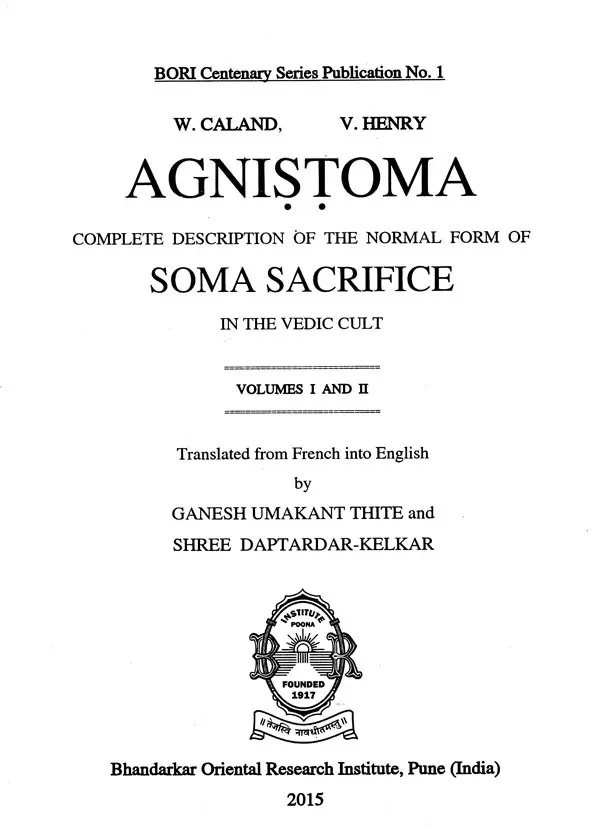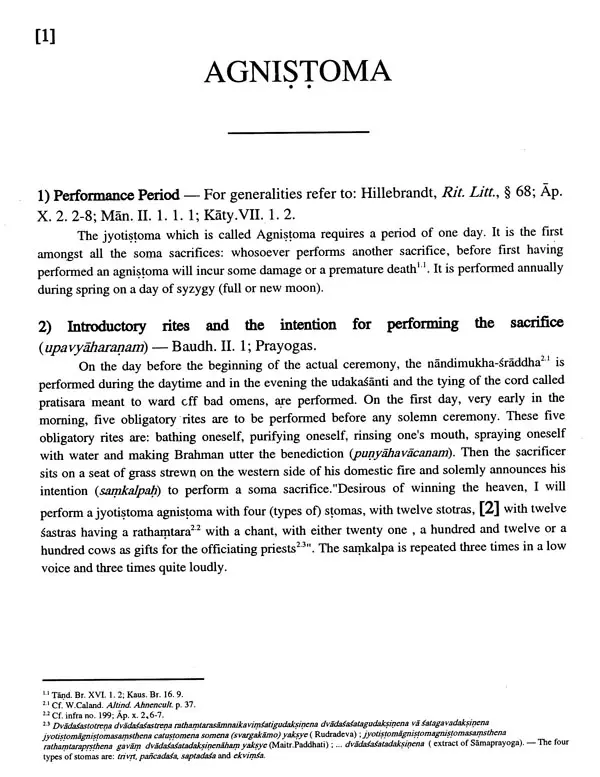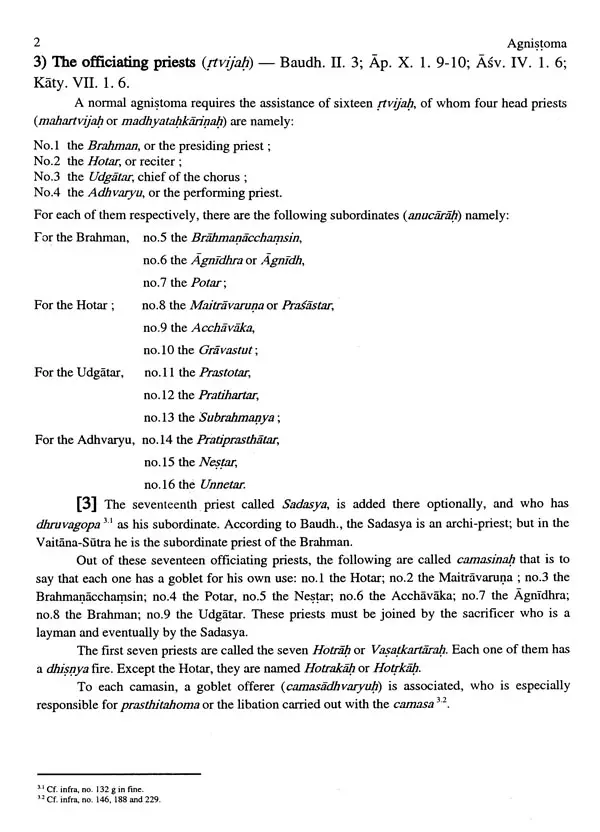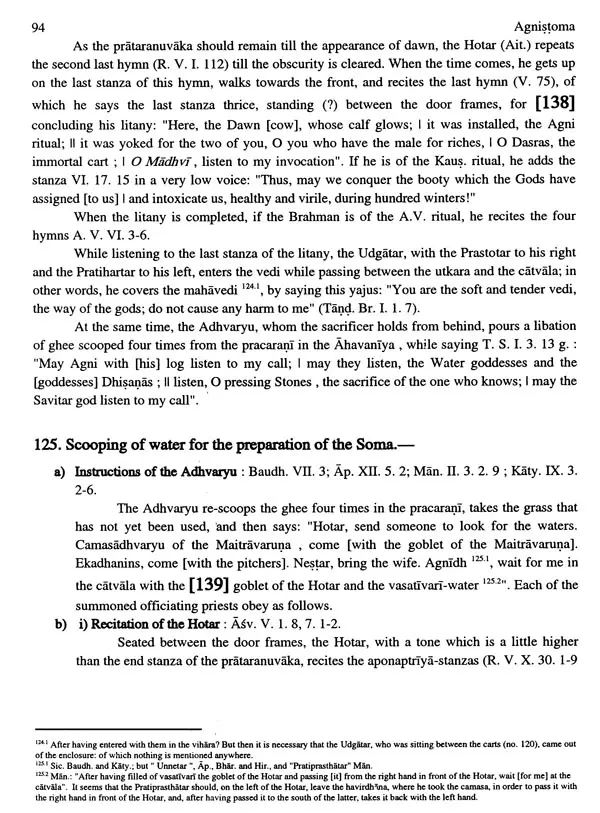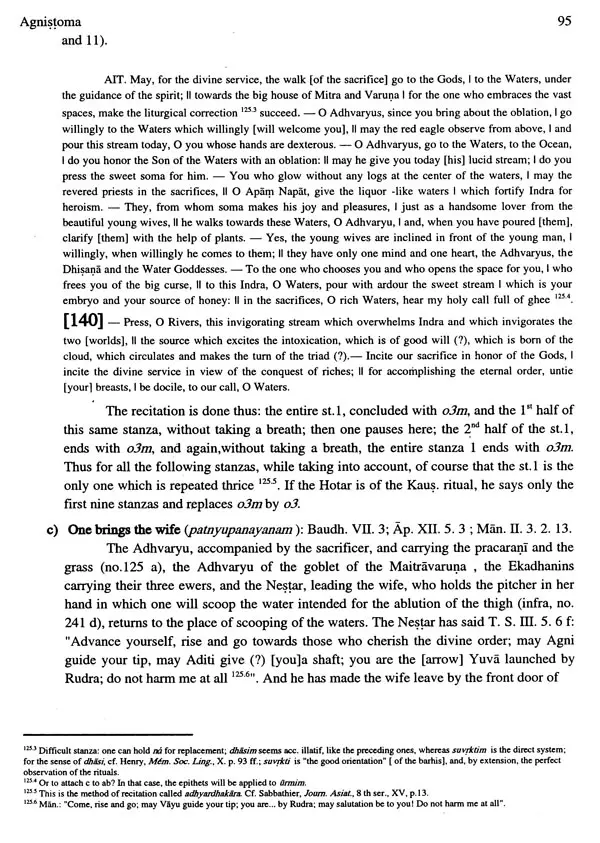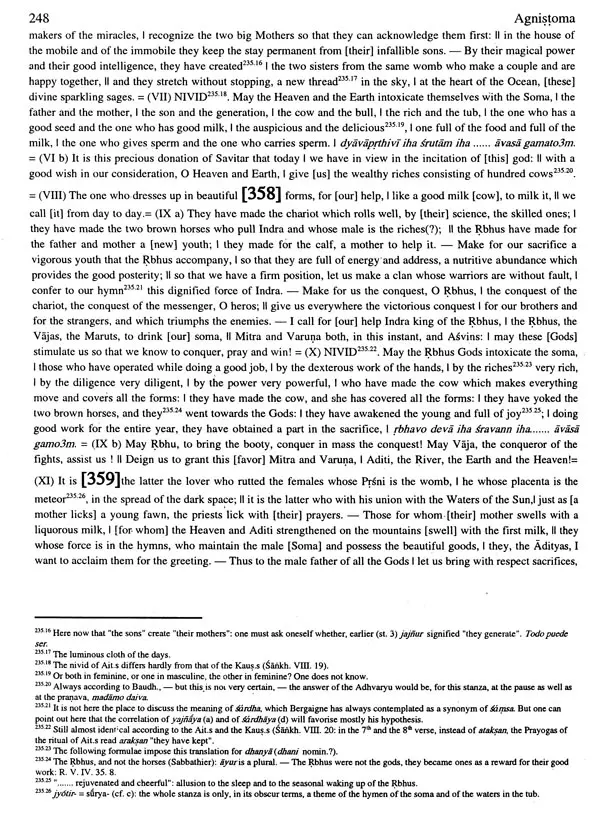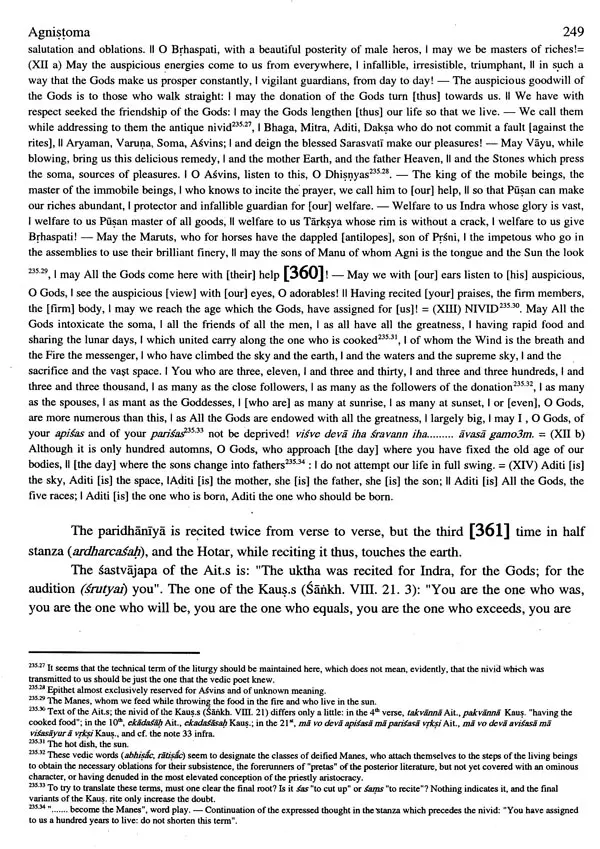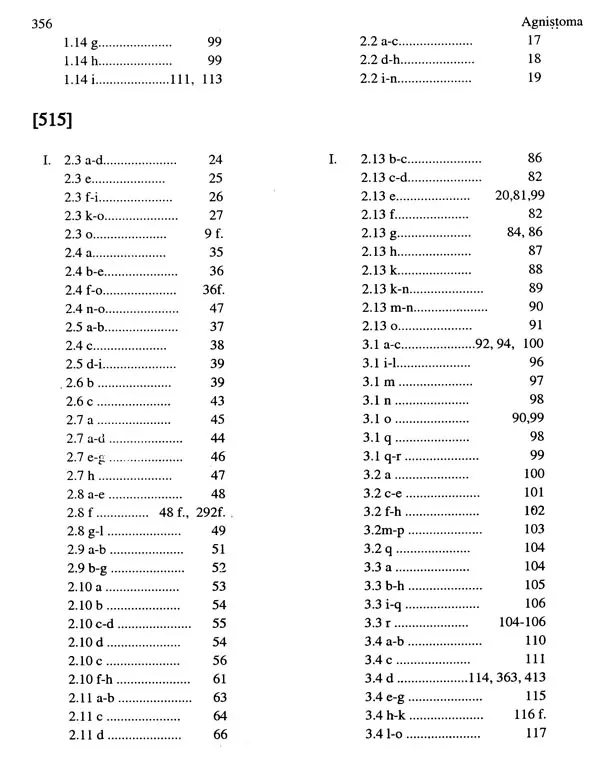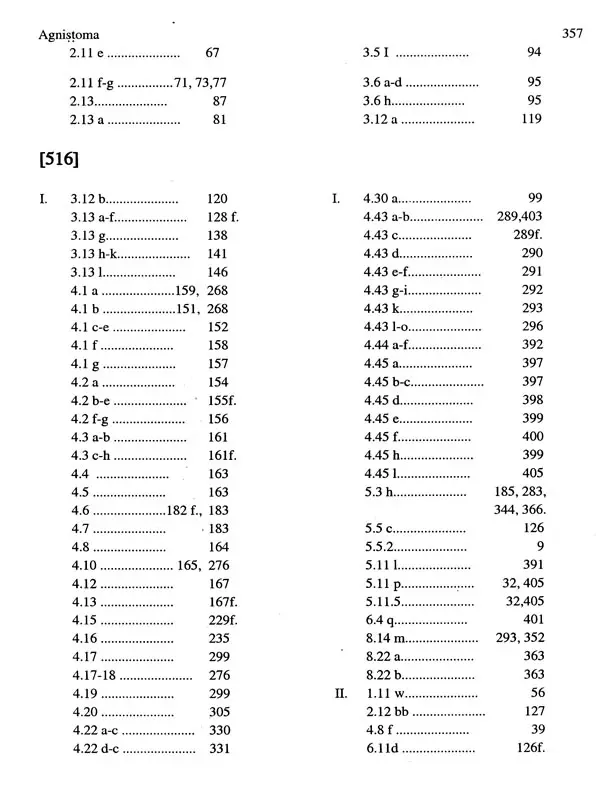
Agnistoma- Complete Description of the Normal Form of Soma Sacrifice in the Vedic Cult
Book Specification
| Item Code: | UAJ360 |
| Author: | W. Caland and V. Henry |
| Publisher: | Bhandarkar Oriental Research Institute, Pune |
| Language: | English |
| Edition: | 2015 |
| Pages: | 406 |
| Cover: | HARDCOVER |
| Other Details | 11.50 X 9.00 inch |
| Weight | 1.17 kg |
Book Description
Shree Daptardar-Kelkar has passed MA with French as her special subject.
The Bar! has decided to bring out a Centenary series of publications. I am happy to initiate the series with the publication of this English translation of the celebrated French book by W. Caland and V. Henry. I express heartfelt gratitude to Prof, G. U. Thite and Smt. Shree Daptardar-Kelkar for allowing the Bar! to publish their work in this centenary series; Both the volumes of the original French work have been bound together in this publication.
I am thankful to Smt. Daptardar for her diligent work of typesetting. Thanks are' also due to Dr. Shreen and L. Bapat, Curator In-charge for seeing the publication through press, Shri Ravindra Potdukhe for the design of its jacket and Shri Shailendra Borkar of the Sanvad
A We know that the vedic Hindus and certainly, before them, their Indo-Iranian ancestors, in the honor of their Gods, squeezed the stalks of a plant unknown to us, which produced an intoxicating juice, which was then poured in libation into the fire or was exclusively consumed [VI] by the officiating Brahmins. The preparation of this beverage, simply called "the pressed one" (sautsutra) constitutes a somamstha, which is "service, sacrifice or celebration of soma", a complicated ceremony of a thousand meticulous and bizarre refinements, which in its numerous varieties constitutes the element, not unique, far from it, - India has many other sacrifices, - but amongst the many it is the most important and is essentially characteristic of the vedic liturgy, traditionally surviving, at least in theory, until now. The type and the base of this ritualism, now obsolete, is the ekaha or the celebration of one day, consisting of three pressings, - morning, midday and evening, - in a manner that the longest days - and the theologizes are not mistaken in admitting the indefinite duration - are not anything else but the complex and symmetric combinations of many types of ekaha, of which at least some idea should be given here to the reader who is sure enough of his patience to approach this present work.
1. EKAHAS. - The ekaha or the service of one day also bears the general name of jyotistoma. whose adequate translation is a little difficult, precision being rarely the main quality of the Indian nomenclatures? The word jyotis signifies "light", better still "bright meteor", designating often the sun or the dawn and is used satisfactorily in the prose and verse which vaguely opposes a luminous and blessed entity to the demonic powers of the darkness and death.
As for the stoma, it etymologically means, "praise", but technically "praise in song" or its liturgical mode. Considering these nuances, one could thus say, if one wishes, that the jyotistoma is the "hymn of splendor" (see also the no. 132 e iii of [Val] this same book).The names of its seven varieties are not as clear as its own.
1. As ekaha is the base of all the long ceremonies, thus the agnistoma is the type and the base of the ekaha: the liturgical works, which consecrate to it a marvelous luxury of details, almost treat all the other services of the day by way of preterit ion. And the reason for it is simple and excellent: everything that is taught in the agnistoma is valid for them, unless specifically modified by prescription or otherwise; anupadiatany agani sarvagy agnistoma stotra ceremony whose description is the matter of our entire book, we obviously do not have much to say here, except that in all, it contains 12 musical executions (stotrana) and 12 official recitations (sastrana) which correspond here respectively, and are distributed in the following manner: 5 in the morning pressing, 5 in the midday pressing, and only 2 in the evening one. As for its name which signifies "praise of Agni", we agree to admit that it is the special name of the 12th and the last piece of the song of the' day, sama in honor of this god, name transferred by extension to the entire ceremony. 2. The ukthya is a sacrifice of soma where the 3rd pressing consists of as much of the sung and recited pieces, as each of the two others: thus 15 for the entire day. The three recitations added to the evening, instead of bearing the name of sastrana, bear the technical name of ethane, which, besides, does not seem to change anything in their nature: from there, the name of the service itself, which does not signify anything else except "where there are the ukthas".
Book's Contents and Sample Pages
